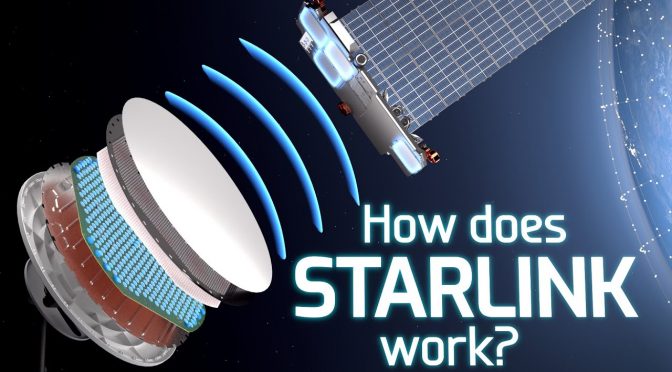SpaceX’s Starlink satellite internet system, brainchild of Elon Musk, has been making headlines for its ambitious goal to provide global high-speed internet connectivity. In an in-depth video by Branch Education, the intricate details and advanced technology behind this revolutionary internet service are expertly explained, leaving viewers with a deeper understanding of how Starlink operates and the incredible engineering feats achieved by SpaceX.
How it all started
Elon Musk, the entrepreneurial mastermind behind SpaceX, Tesla, and Neuralink, has always been a trailblazer when it comes to advancing technology. Starlink, one of his latest innovative ventures, is no exception. Conceived as a global communications network, Starlink aims to provide high-speed, low-latency internet access to people around the world, especially those in remote or underserved areas. The concept of a satellite-based internet service dates back to the 1990s, but it took Musk’s visionary spirit and determination to turn it into a reality that is way more advanced.
The journey of Starlink began with the establishment of SpaceX in 2002. At its inception, the company’s primary focus was on revolutionizing space travel and reducing the cost of launching satellites into orbit. As SpaceX continued to push boundaries in the aerospace industry, Musk’s dream of building a satellite internet network gradually transformed from a mere idea to a feasible project. In 2015, SpaceX publicly announced their plan to create a constellation of small, low-Earth orbit (LEO) satellites, which would form the backbone of the Starlink network.
Fast-forward to the present, and Starlink is now a burgeoning reality. With thousands of satellites already deployed into orbit, the network is undergoing a successful beta-testing phase, and its coverage is rapidly expanding across the globe. Thanks to Elon Musk’s unyielding ambition and the tireless efforts of SpaceX engineers, the Starlink project has become a testament to the power of innovation and the potential for technology to dramatically improve the way we connect with one another. As Starlink continues to evolve and grow, it serves as a shining example of what can be achieved when visionary thinking meets cutting-edge technology.
The Power of Phased Array Antennas
One of the key components of Starlink’s success is the use of phased array antennas, which focus electromagnetic waves more effectively than a single antenna. By adding 1280 antennas together, the signal’s power and range is increased to approximately 3500 times that of a single antenna. This advanced technology allows Starlink to achieve strong, directional beams with enough intensity to reach outer space.
Phased Array Beam Steering
Beam steering is essential for maintaining a connection with the rapidly moving Starlink satellites. By adjusting the phase of each antenna’s signal, constructive interference can be controlled to steer the beam and keep it pointed at the satellite. This continuous recalibration of phase shifts allows for precise aiming of the beam within a 100-degree field of view.
High-speed Data Transmission
Starlink’s impressive data transfer capabilities stem from a technique called 64QAM (Quadrature Amplitude Modulation), which uses variations in amplitude and phase to encode and transmit 6-bit binary values. This allows for data transmission speeds of up to 540 million bits per second. To deliver this data as video content, the advanced video codec (h.264 format) is used for image compression and transmission.
Conclusion
The comprehensive video by Branch Education reveals the intricate and sophisticated technology that makes Starlink Satellite Internet possible. SpaceX and Elon Musk should be applauded for their achievements in this groundbreaking project, paving the way for a more connected world through cutting-edge innovation.

